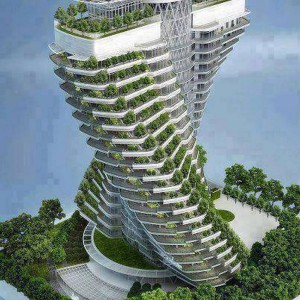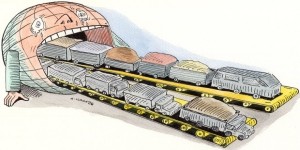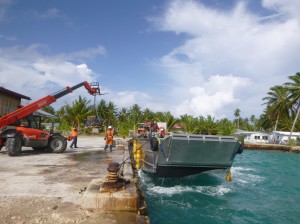Sustainable Living … at its simplest level this means ‘give more than you take’. Human activities are the main cause of habitat loss. Many of our daily actions are unsustainable, often with unintended consequences. Human behaviour is the thing that urgently needs altering, but the drive for money and profit always gets in the way. We are too scared to change ‘because it will cost us money’, but if we fail to change it may us cost us our planet. We need to rethink our priorities and only do things that benefit our Earth and all its biodiversity.
Sustainable living: what on earth does this mean? For the very few people who actually think about this, it is an incredibly complex question. Sustainability is mentioned in countless documents and manifestos, political, media and advertising campaigns, but almost no-one agrees on what this entails. It is a matter of perspective. For an economist ‘sustainable’ implies perpetual profitability; for a politician it may just be a word that is useful to include; for a biologist sustainable means that species can continue to exist; for a scrub-farmer or forest-dweller it means to always have enough food to eat. So how can we achieve these different understandings when some, at least, require the destruction or curtailment of another?
An outdated approach
One of the most insidious expressions to creep into the public realm is ‘sustainable development’. If we mean development being a change in infrastructure ~ building something ~ then invariably that means destroying or degrading a habitat and impacting the resident species. Hardly sustainable! If we mean that a business venture will provide profits for shareholders over a long period of time: at what point does it become sustainable or unsustainable? Let’s imagine a palm-oil monoculture plantation. These can be enormous and are often located where mixed tropical forest once occurred. Those forests supported abundant biodiversity which depended upon a variety of habitats. Now the habitats have gone, many of the species too.
Sustainability requires that growth or gain is greater than the amount taken out through harvesting or losses. In other words there is always more than we need. In the case of natural living resources they also need time to grow or replenish. That fits badly with a perpetual profits model, because a business must continually take in order to exist, whether a resource can stand it or not. Many traditional peoples understand the need to close a resource from harvesting, allowing it to regrow. If we look at the gross impact caused from over-fishing it is little wonder that many fish stocks around the world have crashed. Science provides numbers for Maximum Sustainable Yield, governments or fishery organisations share out quotas, we know the average size of fish species at reproductive age; fishermen are in competition with one another ~ but still we take until the fishes caught have not yet even reproduced. Few remain. This is clearly not sustainable.
Our living planet
We need a new definition for sustainability. Our most precious gift is our living planet; without it we cannot survive. The Biosphere ‘the part where all life on Earth exists’ contains all the habitats and our total biodiversity. We have yet to understand all the complex interactions between and within species. If we are wise we would assume that everything exists for some purpose. What we are now facing is what will happen as a lot of species go? What will our planet do? Sustainability has to include an abundant and diverse Biosphere. That means we ought only to conduct activities that enhance our planetary environment, and prohibit actions that are detrimental to our world. This is the opposite of what we are doing at present. From a biological perspective a species remains viable as long as it has the habitat it needs, food, water and an absence of disease. If it is over-harvested or suffers excessive predation it will decline. If populations are too fragmented they will disappear as reproduction becomes more difficult.
The most pressing need is to find a way to make businesses or economies sustainable: while causing no damage to the Biosphere. Although some businesses might claim to be sustainable, very few are, because they ignore or downplay their true environmental impacts. The precise cause of an impact is less important than the fact that a habitat has gone. We humans need to take a very serious look at ourselves, and everything that we do. Many of our actions are ecocidal: the deliberate killing of our planet. Our excuses are many, but ultimately mean nothing.
Exactly what would living sustainably look like?
We should focus upon the cities, because these are where the majority of people now live; for the first time in human history we have become a predominantly-urban species. Most cities are unsustainable: producing no food, they have insufficient water, chronic air pollution, and waste is poorly managed. If every apartment block had a roof garden, if there were public gardens and green spaces growing fruit and vegetables, if water was used sparingly, if traffic pollution was removed, then we’d be well on the way to achieving a sustainable urban way of life. I agree that the problems are profound. The biggest problem is probably the lack of interest in doing anything differently. The general attitude is we have to conduct business as usual otherwise we will lose money! That is the root of the problem ~ money. Yet, taking a holistic view, if we do nothing we may damage our planet irrevocably, it might no longer function. At the end of everything we cannot eat money.
Out-dated thinking is one causative factor for our predicament. Because land is deemed to be worth money, and prime building land is worth the most money, large areas that could be used as growing spaces are denied us, as some ‘development’ is planned for the future. There are good architects around the world who are designing greener cities and more natural living spaces. Changing our perspective from land mainly being used horizontally, to being used vertically is one possibility. Permaculture utilises 3-dimensional space; hydroponics does away with soil use (but does require water and nutrients); electrical power could be generated via solar or wind energy.





